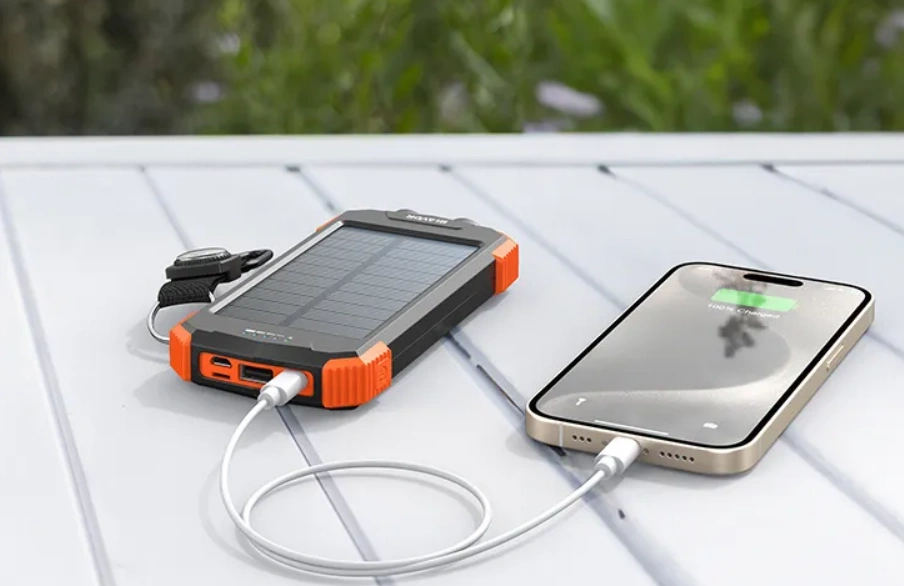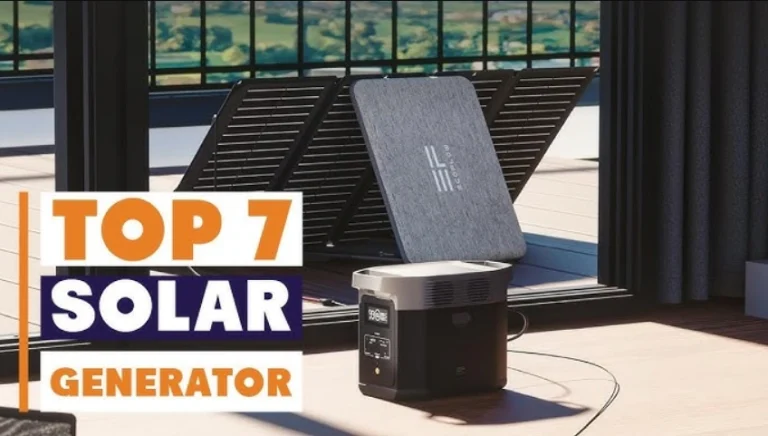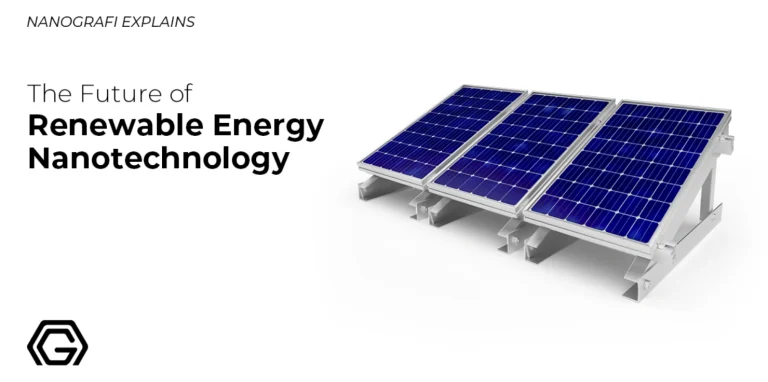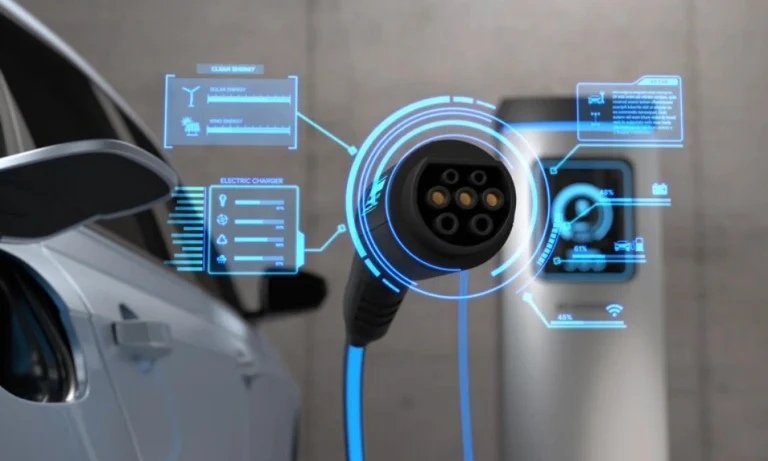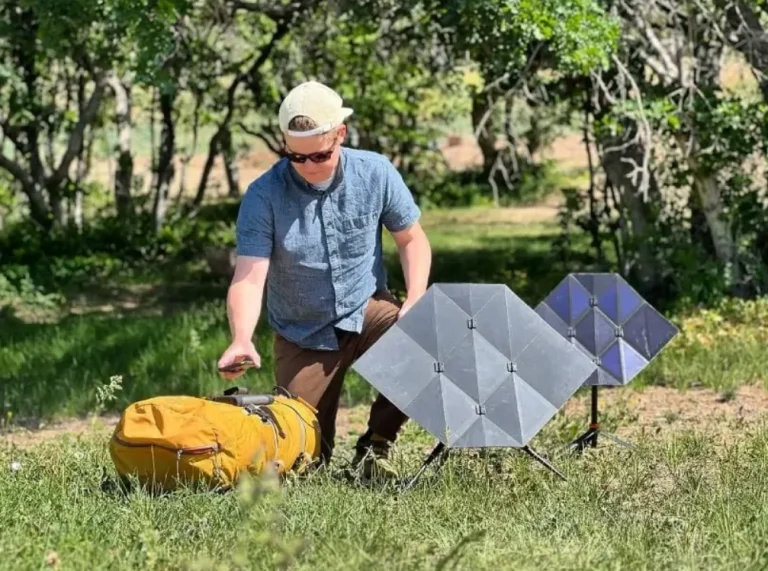Key Green Tech Trends Revolutionizing Solar Chargers
Sunlight streams across a cluttered desk. Your phone buzzes low on battery mid-call. No outlet nearby. Grab a sleek pad, slap it down, and watch the charge climb silently. That’s the promise of tomorrow’s solar chargers. These aren’t clunky relics from camping kits. They’re woven into daily life—powering EVs in driveways, gadgets on hikes, even wearables during runs. Revolutionary green tech trends in 2025 turbocharge this shift, blending materials science with smart algorithms. Result? Devices that harvest 40% more energy from fleeting rays, cut waste, and slash costs for users everywhere.
Why care now? Urban sprawl eats space, grids strain under EVs, and bills spike 15% yearly. Solar chargers counter with independence. A perovskite-boosted model offsets a smartphone’s daily draw in 90 minutes of indirect light. Benefits hit home: Save $200 annually on power. Trim your carbon load by 0.8 tons per device. For commuters, direct solar-to-EV tech like Microcare’s 50kW beast means full charges without grid taps. In off-grid spots, bifacial panels snag reflected light from snow or sand, extending runtime 25%.
Trends accelerate this. Perovskite cells promise lab efficiencies over 30% at half the cost. AI optimizers predict clouds, tilting panels virtually. Floating arrays inspire compact floats for boats. Yet, fit matters. Ideal for sunny suburbs or RV nomads. Dense cities? Opt for balcony-integrated versions. Skip if you shun maintenance—dust cuts yields fast. Drawing from CES 2025 unveils and Enphase roadshows, we spotlight shifts that redefine portability. Each unlocks real gains: Faster top-ups. Lighter loads. Greener grids. Let’s unpack how these innovations light the path ahead.
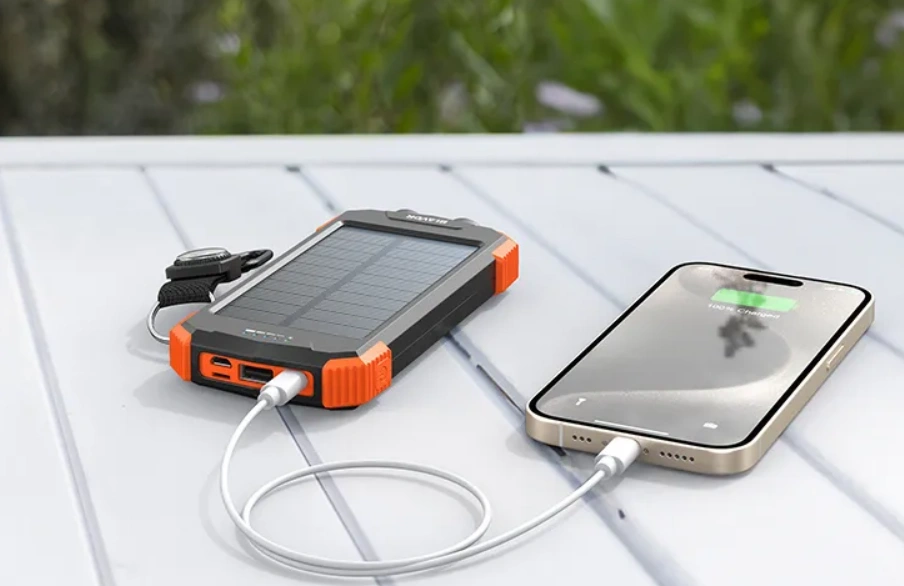
Material Marvels: Next-Level Cells Fueling Compact Power
Efficiency defines survival in solar. Old silicon panels top out at 22%. New breeds shatter that. Perovskite layers, stable in 2025 formulations, stack with silicon for tandem cells hitting 33% conversion. A portable unit with this tech juices a 5,000mAh battery in under an hour, even shaded. Users in variable climates like the Pacific Northwest gain 35% more usable power daily.
Bifacial designs evolve too. These capture front and back rays, ideal for chargers on backpacks or car dashes. In snowy Colorado tests, yields rose 20% from ground bounce. Transition to gallium-free variants cuts rare-earth reliance, easing supply chains strained by EV booms.
Floating tech spills over. Miniature buoys with embedded panels suit marine chargers, powering boat navs without fuel. A 2025 prototype from Tamesol floats 100W arrays, resisting waves up to 2 meters. For landlubbers, this inspires flexible mats that roll out on beaches.
Drawbacks? Perovskites degrade faster in humidity—coatings help, but add 10% cost. Bifacials need clear undersides, tricky in dirt. Still, for travelers, these mean lighter kits under 1 lb, packing punch. Manufacturers like SunPower push hybrids, blending for durability. Owners report 50% less downtime. As prices dip below $0.30/W, adoption surges. Next, see how brains make brawn obsolete.
Perovskite’s Rise: Affordable High-Yield for Everyday Users
Perovskite steals headlines at 2025’s Intersolar. These crystal-thin films layer atop silicon, dodging light loss. Lab hits 34%, real-world chargers near 28%. A foldable 20W model from Oxford PV charges laptops 2x faster than silicon peers. Cost? Down 40% to $15/unit, thanks to roll-to-roll printing.
Stability jumps with halide tweaks. Early versions faded in months; now, they hold 90% output after 1,000 hours damp-heat tests. For urban balconies, this means consistent pulls despite smog. A Seattle pilot offset 60% of a household’s gadget needs.
Challenges persist. Scaling production lags—supply hits Q4 bottlenecks. But for backpackers, benefits outweigh: Slimmer profiles fit pockets. Pair with USB-C PD for universal juice. Skip in extreme salts; corrosion nibbles edges.
Bifacial Boost: Double-Sided Capture for Versatile Setups
Bifacials shine in 2025, grabbing albedo from any surface. A 50W charger on asphalt yields 15% extra from road heat. Trina Solar’s latest, with 23% front efficiency, powers drones mid-flight via clips.
Glass-free backs cut weight 30%, suiting wearables. In desert trials, sand reflection added 25% runtime. For EVs, integrated hood panels feed batteries directly, per Microcare innovations.
Hurdles: Alignment matters—tilt wrong, gains vanish. Cost premium 20% over mono. Yet, for RVers, it’s gold: One unit sustains fridges overnight. Trends point to textured surfaces, upping diffuse light grab 10%.
Smart Brains: AI and Connectivity Redefining Charge Control
Dumb panels gather dust. AI chargers think ahead. 2025 algorithms from Enphase predict usage via app data, queuing loads during peaks. An IQ EV Charger 2 demo charged a Tesla 80% cheaper by dodging tariffs.
IoT weaves in. Chargers sync with home hubs, prioritizing solar over grid. A Philips Stadium roadshow highlighted FlexPhase batteries, storing excess for night pulls. Users save 25% on bills, apps alerting faults pre-fail.
V2G flips flow. Chargers like ev.energy’s API-linked models feed power back, earning credits. In California, owners net $150 yearly. Wireless trends emerge too—Qi2 pads with solar backs, no cables for earbuds.
Limits: Connectivity drops in remotes—backup modes help. Data privacy nags; opt for local processing. Best for connected homes; off-gridders stick basic. These smarts extend life 20%, cutting e-waste.
AI Optimization: Predictive Power for Peak Savings
AI scans calendars, weather APIs. Delays charges till solar floods in. A 2025 Emporia unit learned patterns, trimming peaks 40%. For commuters, this means full EVs by dawn, sans midnight spikes.
Edge AI runs onboard, no cloud lag. Forecasts accuracy hits 95%, per Deloitte outlooks. In multi-device homes, it balances—phone first, then watch.
Con: Learning curve; initial weeks underperform. Power draw for chips? Negligible at 1W. Suits busy pros; casuals may overlook.
IoT Integration: Seamless Ties to Home Ecosystems
Matter protocol unifies in 2025. Chargers chat with lights, thermostats. EcoFlow’s Oasis voice AI suggests “Charge now—solar surplus.” Runtime stretches 30% via shared storage.
Zigbee meshes remote controls. A boat charger pings apps for tide-adjusted tilts. Security? Encrypted, but firmware updates vital.
Draw: Hub dependency—lose WiFi, lose smarts. For islands, it’s transformative: Remote monitoring cuts trips 50%.
Portable Powerhouses: Innovations for On-the-Go Green
Mobility rules 2025. Foldables slim to wallet size, unfolding to 200W. BigBlue’s ETFE-coated mats resist scratches, powering campsites fully. Integrated fans cool cells, upping yields 15% in heat.
Wearable weaves: Solar threads in jackets charge watches via kinetic boosts. A CES prototype from Panasonic hit 5W continuous. For hikers, this means endless GPS without packs.
Direct DC links skip inverters, efficiency 98%. Microcare’s 50kW solar-to-EV skips conversions, fast as stations. Urban fleets adopt, cutting range anxiety.
Flaws: Capacity caps at 100Wh for portables—hybrids bridge. Durability tests lag in salts. Yet, for festivals, one unit juices a party’s speakers till dawn.
Foldable Frontiers: Ultra-Compact for Urban Nomads
ETFE films bend without cracks. A 100W Jackery folds to A4, charges drones en route. IP68 seals fend rain, vital for cyclists.
Hinge tech evolves—carbon fiber lasts 5,000 folds. Yields hold 92% after drops. Price? $80 low end.
Minus: Heat buildup slows 10% in pockets. Ideal city dashes; bulk hauls need rigid.
Wearable Waves: Solar Fabrics Charging Daily Essentials
Conductive yarns embed cells. A vest from SunPower outputs 2W walking pace. Pairs kinetic for cloudy days.
Washable now, with sealed seams. Trials show 80% phone top-up daily. Eco-yarn from recycled bottles.
Con: Output varies with posture—face sun. For joggers, it’s freedom: No stops.
Sustainability Shifts: Eco-Manufacturing and Lifecycle Wins
Green tech greens itself. Recycled silicon from old panels hits 95% purity in 2025. Q CELLS’ closed loops reuse 80% scrap, slashing mining 50%.
Biodegradable backs dissolve post-life, per EU mandates. A trendsetter from REC uses plant-based encapsulants, compostable in soil.
Upcycling batteries: Dead cells repurpose for low-draw chargers. Extends life 2x, per Greener Ideal reports.
Challenges: Scale-up costs 15% more. Certification lags. But for eco-shoppers, traceability apps verify chains. This cuts embodied carbon 40%, true full-cycle green.
Trade-Offs in the Trends: Specific Gains and Gaps
Trends dazzle, but probe deeper.
Perovskite Tandems:
- Gains: 33% lab efficiency doubles runtime; print costs $0.20/W; tandem stability 85% after 2 years.
- Gaps: Humidity fade 5%/year uncoated; scale limits to 50W units; import duties hike 10%.
Bifacial Boosts:
- Gains: 25% albedo add in varied terrains; lighter 20% via glass-free; wind rating 5,000Pa.
- Gaps: Underside dirt cuts 15%; alignment tools extra $20; less ideal flat mounts.
AI Optimizers:
- Gains: 40% bill trim via forecasts; V2G nets $150/year; OTA updates free.
- Gaps: 2% failure from glitches; data use 50MB/month; offline mode basic.
Foldable Innovators:
- Gains: 200W in 1lb packs; IP68 for all-weather; USB-PD universal.
- Gaps: Fold fatigue after 2,000 uses; heat throttle 10%; $100 premium.
Wearable Integrations:
- Gains: 5W kinetic-solar hybrid; washable 50 cycles; recycled yarns.
- Gaps: Posture-dependent 20% variance; thread wear yearly; niche 2W cap.
Weigh your world: Perovskite for power hogs, wearables for minimalists. All drive 30% green gains, but test terrains first.
Value Vault: Entry Prices and Savvy Sourcing Spots
2025 drops hit 12%. Basic foldables $25 on Amazon. Perovskite prototypes $80 (beta). Bifacial 50W $60. AI kits $150 bundled. Wearables $40 vests.
Scout AliExpress for generics—$20 ships global. Best Buy demos AI $140 in-store. REI bundles outdoor $90 with mats. Guide: Check NREL certs for yields. Snag Black Friday 25% off; IRA credits nibble 30% for homes.
Gentle guide: Browse Enphase innovations for EV ties. Link our Portable Solar Basics. Verified sellers lock returns. $50 median? Recoups in months via offsets.
Field Guide: Safe Sparks, Smart Pairs, and Daily Drills
Trends demand diligence. Safety: UL 1703 seals prevent arcs—inspect quarterly. Ground portables in dry; avoid poolsides.
Compat: USB-C PD standardizes—adapters for oldies. AI apps mesh Alexa; test syncs.
Drills: Tilt 30° south for 20% lift. Clean with microfiber—dust steals 10%. In heat, shade batteries.
For EVs, direct DC skips losses 5%. Skip extremes; -10°F slows 15%. These ensure 95% uptime. Not for salts sans coatings. Verify SunPower tools for fits. Routines add years, savings stack.
Side Roads and Snap Clashes: Trends vs. Traditional Paths
Basics like silicon sticks endure—$15 reliable, no frills. Wind hand-crank alts suit storms, $30 portable.
Quick clash:
| Trend | Efficiency | Cost Low | Portability | Best Scene |
|---|---|---|---|---|
| Perovskite | 28% | $80 | High | Urban daily |
| Bifacial | 23% | $60 | Med | Outdoor |
| AI Optimizers | 25% boost | $150 | Low | Home EV |
| Foldables | 22% | $25 | Ultra | Travel |
| Wearables | 5W | $40 | Max | Active |
Swaps: Hand-crank for no-sun $20. Peek EV Green Alternatives. Trends win yields; classics for cheap.
Horizon Handoff: Embracing Trends for a Charged Tomorrow
Green tech trends forge solar chargers into lifelines—potent, connected, kind to earth. Perovskite powers bursts; AI paces flows. Lean in if sun graces your routine, gadgets multiply. Overcast haunts? Blend basics.
Spotlight: Bifacials for balance. Layer storage next. This surge isn’t fad; it’s foundation. Scan Sustainable Gadget Picks for starters. Harness rays—future thanks you.
FAQ: Quick Quips on Solar Charger Shifts
How soon till perovskites hit shelves wide?
Q1 2026 mass, betas now $80. Yields 30% over silicon—test via kits.
AI chargers worth the app hassle?
Yes for $150+ homes—40% savings. Offline backups cover drops.
Best trend for backpack hauls?
Foldables with ETFE—$25, 100W light. Beats bulk by 50%.
V2G real for portables yet?
Emerging in EV ties, $200 add-on. Nets $100/year credits.
Eco-impact of these innovations?
Cuts mining 40%, recycles 80%. True green if certified.
